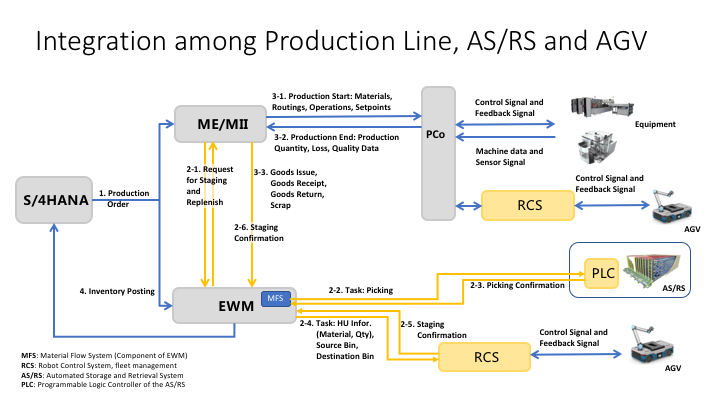
Enabling "Extreme Manufacturing" Page 2.
Robots in Manufacturing: Enterprise View
There is clear consensus about, that this type of achievement must come from automation. If we speak about automation, it involves IoT, robotics, machines, artificial intelligence and machine learning, domain solutions and most of all an end-to-end view on the business processes.
Manufacturing processes are a sequence of operations and processes designed to create a specific product, specifically deals with the process of turning materials into a product. Most products consist of multiple parts that are assembled to a finished product.
Assembly processes consist of e.g. mechanical fasting, soldering, brazing, welding, or adhesive bonding. But, whatever the process is, there needs to be an accurate way of determining how many items can be manufactured, and at what price. The process and the system must be flexible enough to react to changing inventory or production processes.
Showcase: The Open Integrated Factory
In order to illustrate, how SAP has showcases and end-to-end automation scenario in its open integrated factory. The open integrated factory showcase highlights an end-to-end, highly flexible, seamlessly integrated manufacturing process leveraging open standards.
The customer configuration and individualization is sent to S/4HANA. With SAP digital manufacturing the production order is created and dispatched on the production line.
The full production orchestration is managed by the SAP Manufacturing Execution Suite. It orchestrates the automation devices and hands over the parameters to automation. The automation actors are connected via the standard protocol of OPC UA.
The full production orchestration is managed by the SAP Manufacturing Execution Suite. It orchestrates the automation devices and hands over the parameters to automation. The automation actors are connected via the standard protocol of OPC UA.
During the whole automated assembly process, digital cameras do quality inspections to control color and surfaces. After the visual check the weighing check is performed. All data and pictures are collected for assembly documentation.
If all steps have been completed without error, the product is sent off for manual finishing. In case of non-conformances, the product needs manual rework. 3D visual instructions support the operator in the rework process.
In the production warehouse connected pick-by-motion technology (gesture control) ensures that the warehouse worker chooses the correct bin. Another highlight of the showcase: if a customer requests an individual product change, differing from the standard variant, this is done in a fast and automated way through additive manufacturing.
A CAD technician implements the requirements to the model and creates the print file that is added to the SAP production order. Then the CAD file is transferred to SAP manufacturing execution and the 3D printer.
Matrix Production Scenario
In another showcase, we have shown how we can use these integrated process view in a warehouse setting. We have used SAP EWM (Extended Warehouse Management) to connect to the AGVs and the Automated Storage and Retrieval System (AS/RS).
Figure 2 shows the how the participating components are connected to each other.
Fig. 2: Integration among Production Line, AS/RS and AGVs

